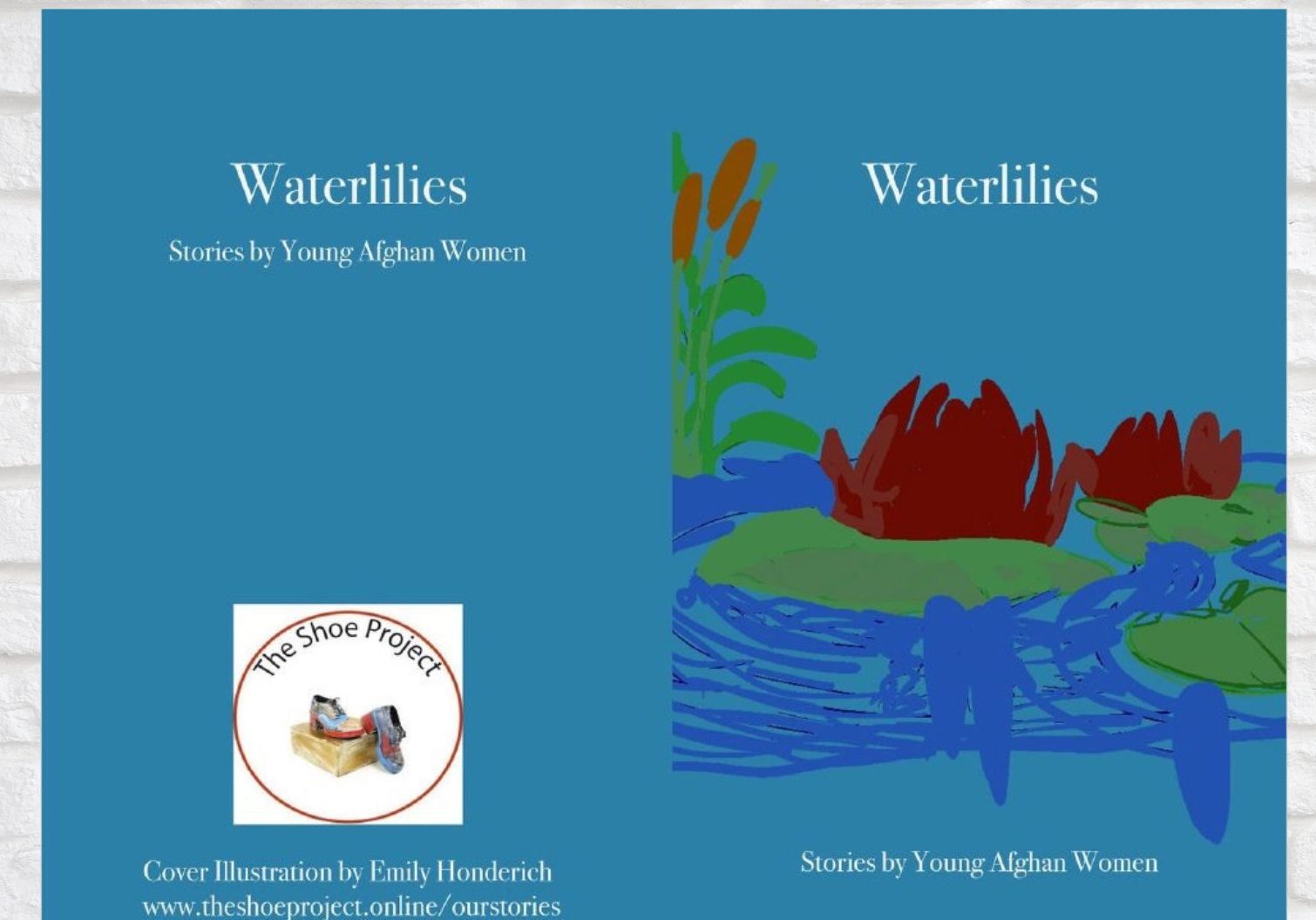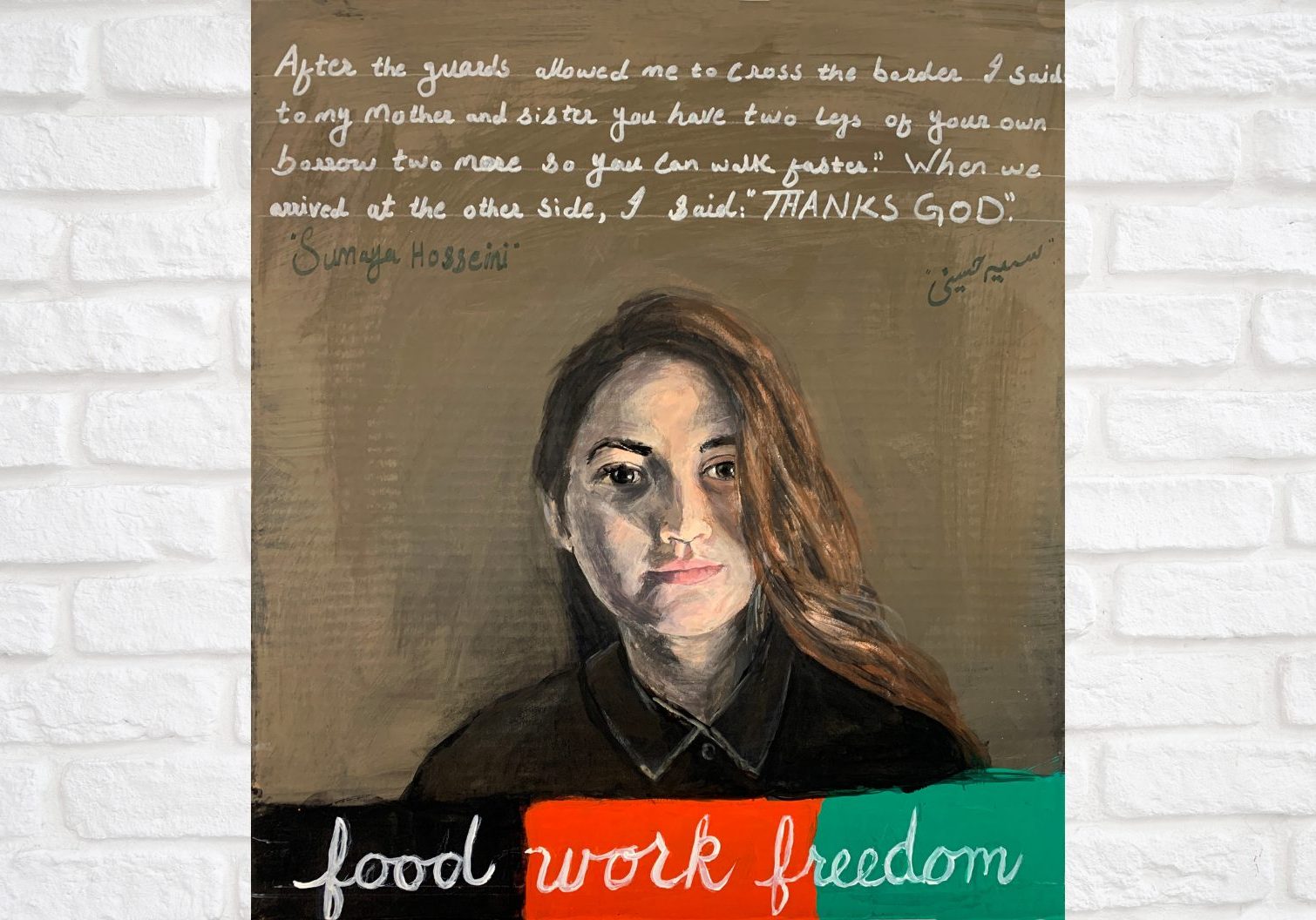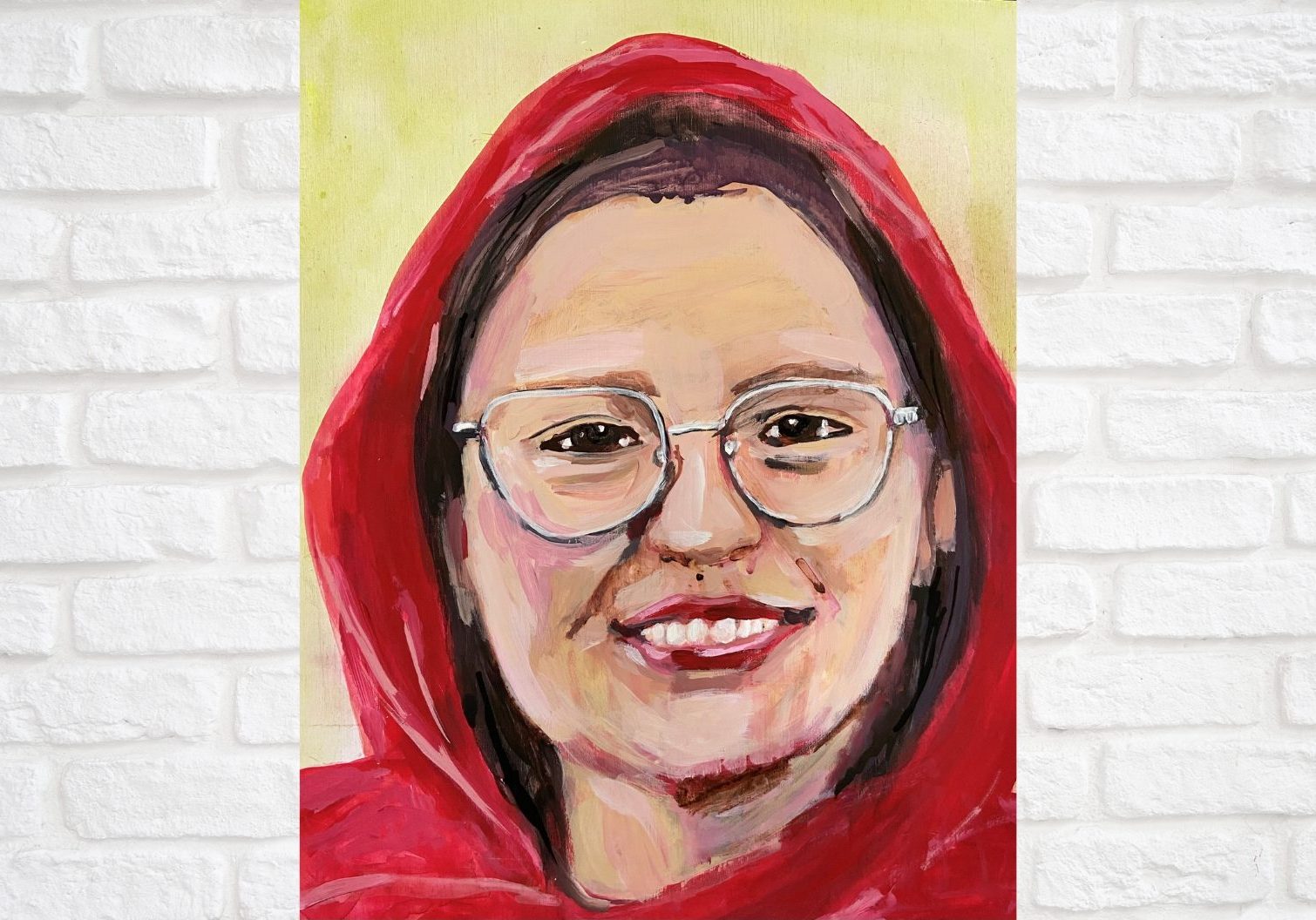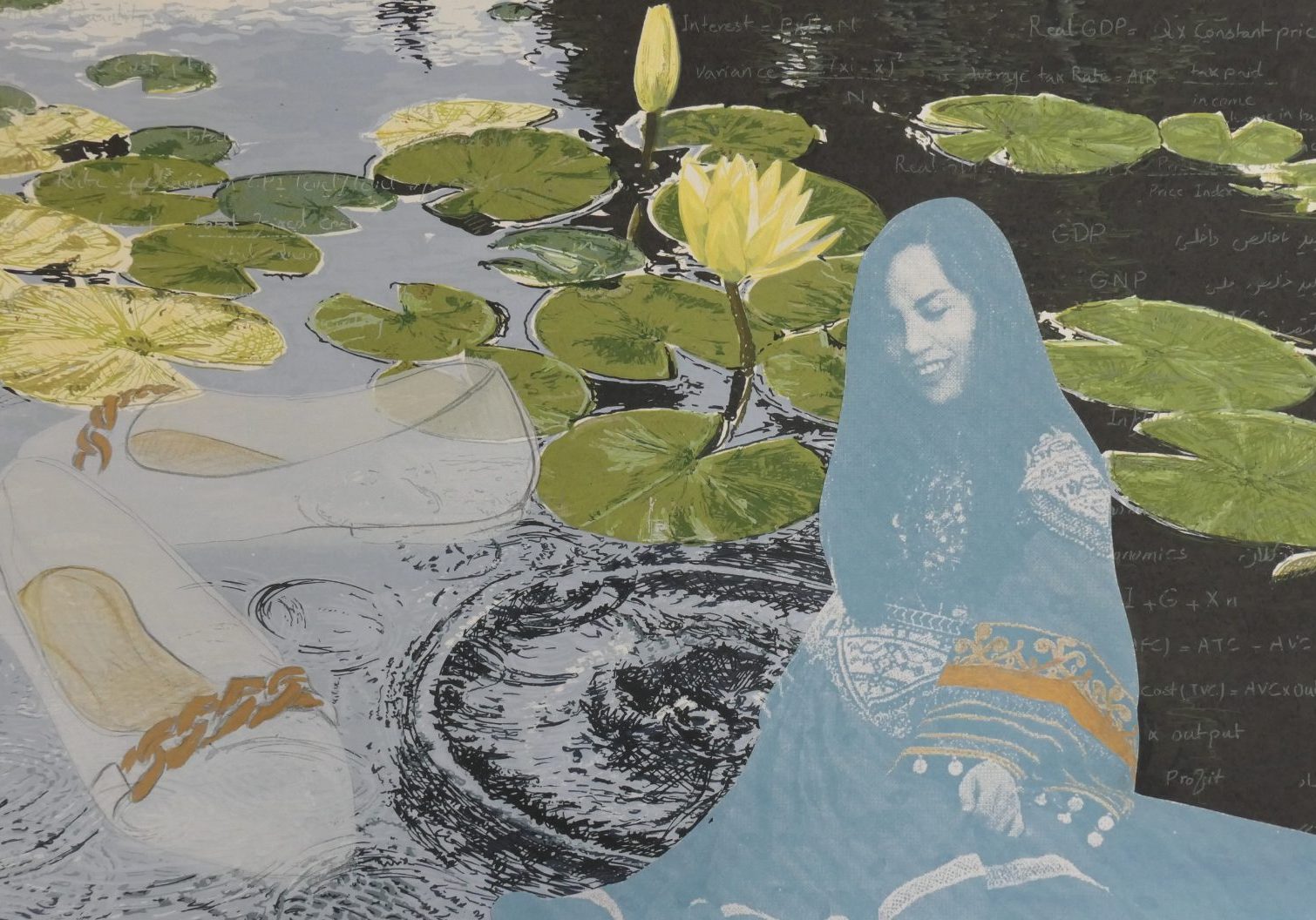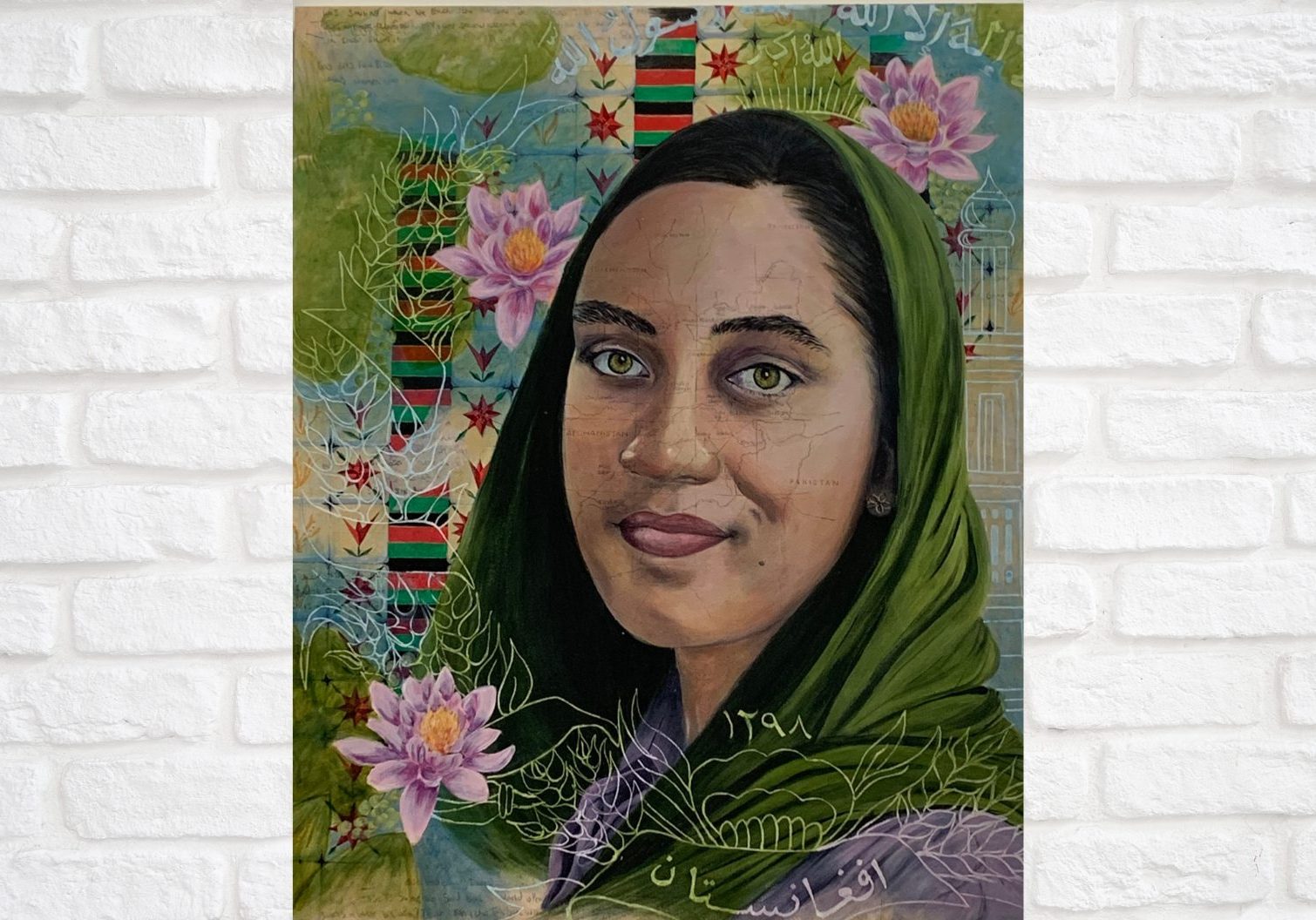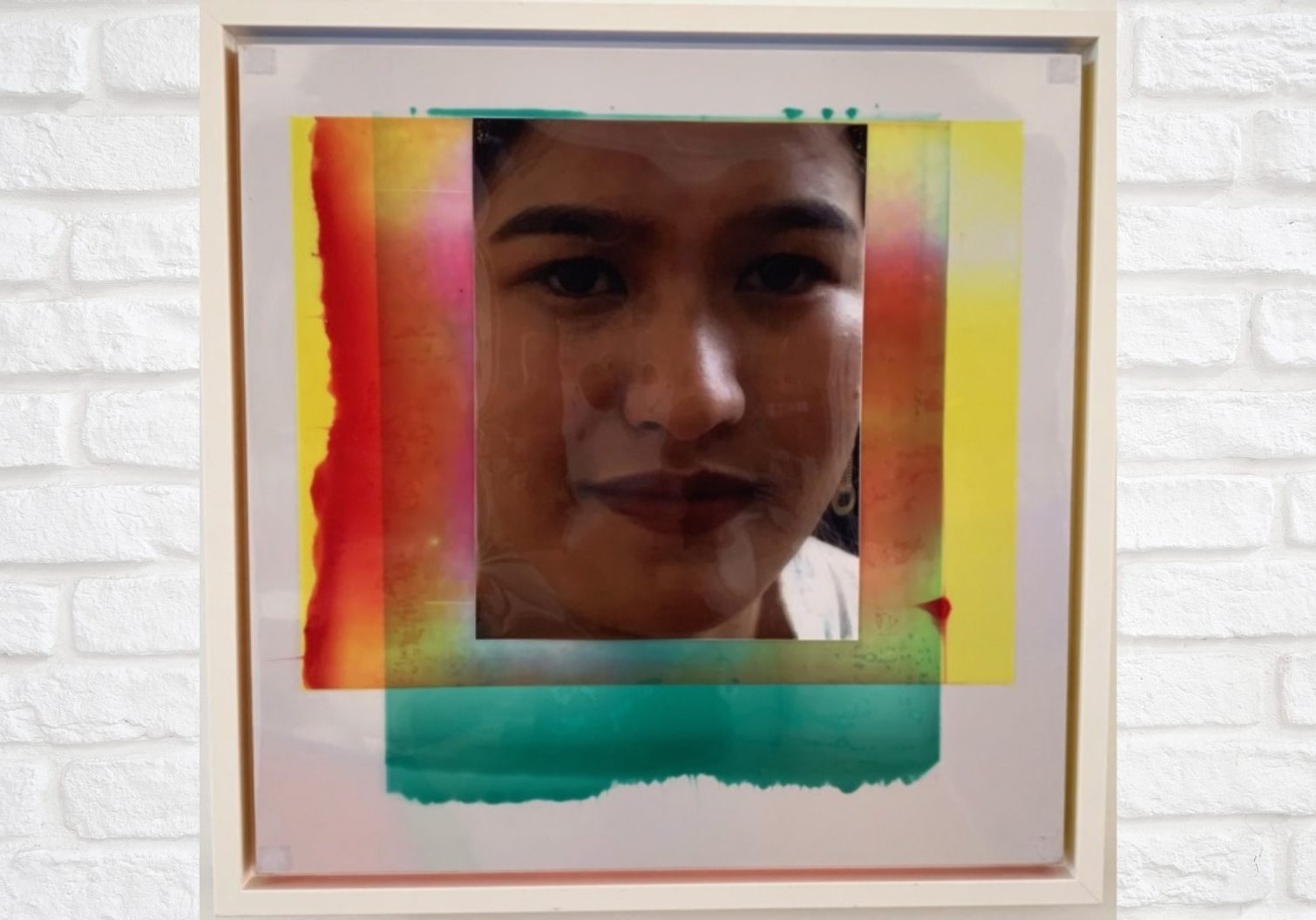My Smart Shoe
My Smart Shoe
Friba Sultani
Summary:
After hearing the stories of her friends’ escapes from Afghanistan, a young woman imagines a shoe that can record all their journeys—like the black box of an airplane.
Story:
Among all the things that humans wear, the shoe is the one that is at our service the most because we stand on it with all our weight. Therefore, it is the shoe that experiences and expresses our status by its condition—no matter whether it is old, new, wet, dusty, muddy or torn apart.
It was midnight when I was thinking about my favourite shoe. There were colours flying to every corner of my mind. Then suddenly the colours crushed together, and my dream shoe appeared on the dark screen of my mind. It was a shoe with a black box like an airplane’s, a box that saves all memories.
The inspiration for creating this shoe was the stories that I have heard from my friends in Islamabad and the stories that were written by women in The Shoe Project. Each of us has passed a different way of immigration with different shoes. As I moved across the country with a small group, going from city to city, past Taliban checkpoints and finally across the border out of Afghanistan, I wore a pair of dark brown sandals with a 10- centimetre platform sole.
Although my feet got dirty while I was walking on muddy and dusty desert roads in those sandals, I felt fresh because I had fresh air on my feet. But I was obliged to hide my feet because the Taliban doesn’t want women to expose any bare skin. But during summer seasons, I cannot wear sneakers or any shoe that covers my whole foot. That’s why I rejected my mom’s advice to buy sneakers for travelling to Pakistan.
My friends wore sneakers, boots, and loafers while travelling to Pakistan from various borders. Some passed the Torkham border. Others passed the Spin Boldak border. I wanted to create a shoe for everyone travelling in different ways. The various scenes in their stories motivated me to create a shoe that could save them all.
Therefore, I want to introduce my dreamy shoe.
My dreamy shoe reflects my life journey. It expresses all my experiences on its screen. Through that shoe, I want people to understand where I have gone and what the conditions were. I want my shoe to describe all the situations that I’ve experienced. That is why my smart shoe will have a black box like the one in an airplane. It will show on its screen small pictures of my high school, university, country of origin, its mountains, desert, and grass. I want the shoe to have seven colours like a rainbow to represent the beauty of diversity in every aspect.
Moreover, this kind of shoe is useful not just for refugees, but for adventurers as well. They can wear the smart shoe while going to historical places for sightseeing. Its black box will save all the journey’s scenes, so the adventurers can review it and notice unique things that they missed. I say this because during our journeys, our eyes are looking up and across, at mid-level, not down. That’s why we miss important things—like the footprints of other people who have travelled across the same land or the migration roads of people who have had to leave their country.
I want the black box to be portable from shoe to shoe, because shoes get old wet dusty muddy or torn apart, or too small. Each person can transfer the black box to another new shoe. I love this imagined shoe because it would explain all my memories when someone looks at me. It would remain as proof of my life journey.
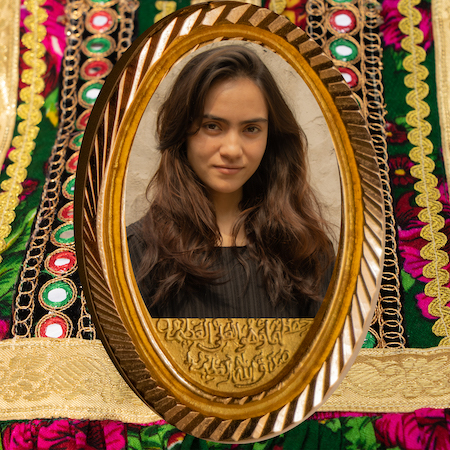
Friba Sultani was born in Lashkargah, Helmand province in 2003. Her family moved to Kabul for her high school education. During those years, she learned Chinese and participated in debating and leadership programs. She graduated in 2021 and has continued her studies in English.
Portrait: Rachel Broussard with Friba Sultani
Friba
Digital photo collage with three layers
2023
“My portrait partner is Friba Sultani, and our final portrait is a digital photo collage with 3 layers.
I photographed Friba in my backyard, and she chose this portrait. She told me the concrete garden wall behind her looks like many of the houses in her hometown in Helmand province.
The golden object behind Friba is a necklace from her mother, and she wears it every day. The pendant has a prayer for protection written in Farsi. (Friba told me that a similar necklace I have from my grandmother has the same prayer written in Arabic.)
The background fabric is from a dress that Friba’s mother made for her while she still lived at home. Green is her favorite color, and the flowers show a promise of her life in Canada.”
